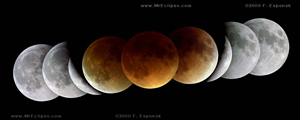Rare total lunar eclipse makes last appearance until 2010
February 18, 2008
A stellar interstellar event will occur Wednesday night as the first total lunar eclipse since March 3, 2007 will turn heads to the sky.
The partial eclipse will begin at 7:43 that night and will last until 11:09 p.m. According to NASA, the last lunar eclipse that was visible from the entire continental United States happened Aug. 28, 2007, and the next one will not transpire until Dec. 21, 2010.
Brenda Culbertson, Washburn’s planetarium coordinator, said one of the main reasons people are so intrigued with eclipses is simply the fact that they can be seen.
“It’s something going on way out there that we can’t touch,” said Culbertson. “We can see it, and it’s just different from what we usually see so people like to watch it.”
Culbertson said that in ancient times people had superstitions about eclipses, thinking that the gods or goddesses were displeased and were trying to take the moonlight away. People would do all sorts of rituals to get it back, and when the light reappeared again they thought they had succeeded. In modern times, things have changed so that scientists can use the eclipse as a way to study the surface of the moon that may not have been visible before.
“As far as scientists, we can make some timings. We can oftentimes make discoveries of new craters as we follow the shadows as it passes across the face of the moon,” said Culbertson. “Other than that it’s just pretty cool to watch. I guess that’s just it, the aesthetic value of it.”
Depending on the weather and clarity of the sky, telescopes will be set up along the sidewalk on the south side of Stoffer Science Hall from 7 to 11 p.m. to allow a close-up view of the eclipse, as well as a more distant contrasting sight from outside. It can also be viewed from inside via a video link connected to a telescope. The viewing is open to the public free of charge, and cameras are allowed so long as the camera does not flash.



